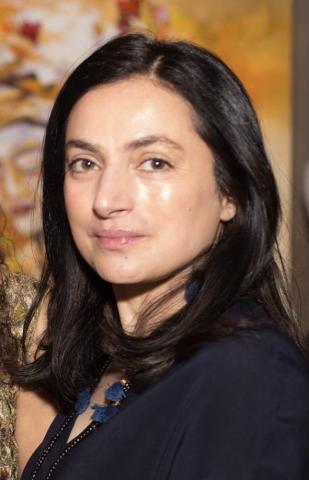Making Women's Contributions Visible
Tapestry Talks explores how Namita Luthra '91 is involved in recognizing women's achievements through public statuary.
During 2017 trip to Washington, D.C., Namita Luthra ’91 visited several national monuments. The Lincoln Memorial deeply moved her. “I climbed the grand stairs to be enveloped in a chamber, eyes adjusting to the dimness, and even among the crowds could commune not only with the man but with his finest words etched in marble on the wall,” she recalls. “It felt like a sacred space dedicated not just to a mortal, but to a country’s highest ideals.”
Luthra soon began noticing other monuments and saw that our diverse foremothers were largely absent. “Public statuary is one way a society cements its heroes,” she says. “I began to wonder: If monuments have the power to affect so deeply, does the absence of monuments to women and people of color have a similar and commensurate effect?”
Later that year, Luthra joined the board of Monumental Women, a volunteer-led non-profit focused on increasing awareness of women’s history and installing a monument in New York's Central Park honoring women’s rights pioneers Sojourner Truth, Susan B. Anthony, and Elizabeth Cady Stanton.
This interest in the mechanisms of social change began at Bryn Mawr, where she was inspired by Mahatma Gandhi and the methods he used to win India’s independence. Studying Gandhi, along with her own travels to her birthplace, India, sparked Luthra’s dedication to law and advocacy work. She melded the two passions as a senior staff attorney at the Women’s Rights Project of the American Civil Liberties Union, where she spearheaded litigation, advocacy, and public education efforts to advance women’s rights and litigated gender discrimination cases.
Now this thread continues as Luthra immerses herself in research on women changemakers. She was surprised to learn that some of the tactics that Gandhi used—hunger strikes in particular—had been deployed decades earlier by British and American suffragists. Women like Kamaladevi Chattopadhyay were instrumental in Gandhi’s work, reinforcing that women have long been political thinkers and strategists, but their work has gone unrecognized.
"Women's fingerprints are all over history, we just don't know it."
Celebrating the history of diverse women matters to a new generation of girls. “When you see public statuary that honors women who look like you, it creates a profound feeling of belonging, not just in the present but in the vast sweep of history. You matter and have mattered. Belonging is a powerful driver of curiosity and ambition to expand rights today.”
In addition to her work with Monumental Women, Luthra serves on the advisory boards of LexSeeHer, a nonprofit working to make women’s historic contributions visible, and The New Historia, an initiative focused on feminist historical recovery at The New School. On May 15, LexSeeHer will unveil sculptor Meredith Bergmann’s monument Something Is Being Done. Visitors to Lexington, Ma.’s historic district will see diverse women and girls across 300 years depicted with their names etched in bronze. In February, The New Historia hosted an event for Barbara Savage’s book Merze Tate: The Global Odyssey of a Black Woman Scholar, the story of a woman born in 1905 who earned graduate degrees from Oxford and Harvard and went on to become a scholar, world traveler, journalist, author, and advisor to world leaders.
Luthra encourages others to dive into women’s history and explore what lessons can be translated into action. “Every time I meet one of these path-blazing figures, I can feel the electricity pulse through me,” she says. “Similar to what these women faced, permission to act is not forthcoming. It’s internal and only yours to give."
Published on: 03/09/2024

